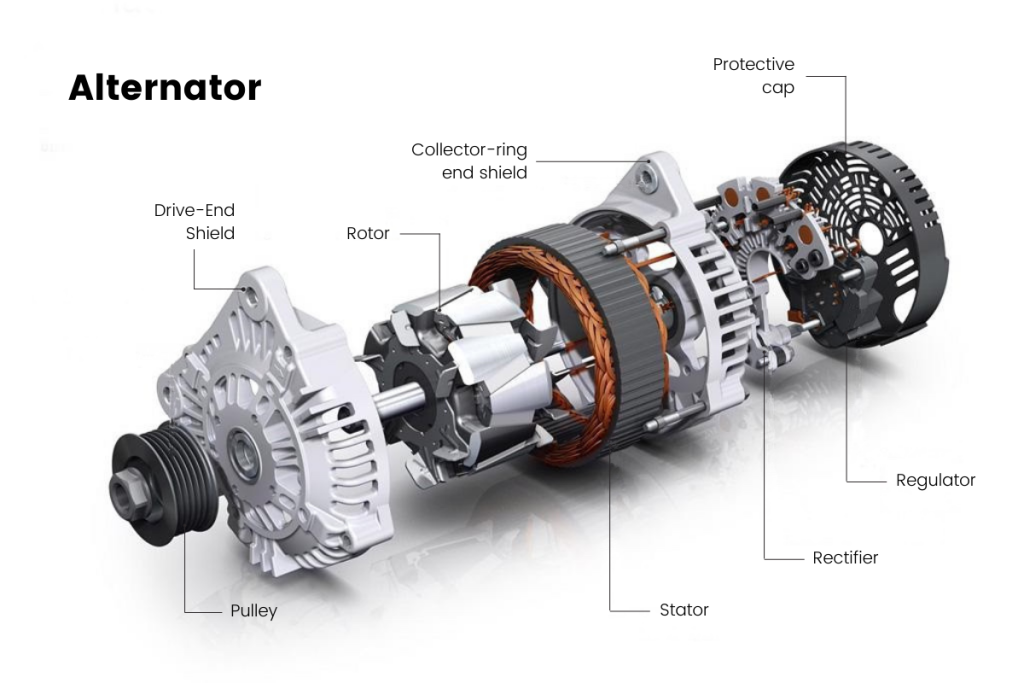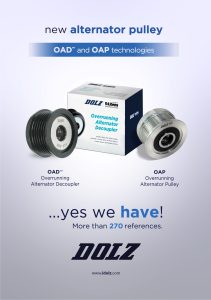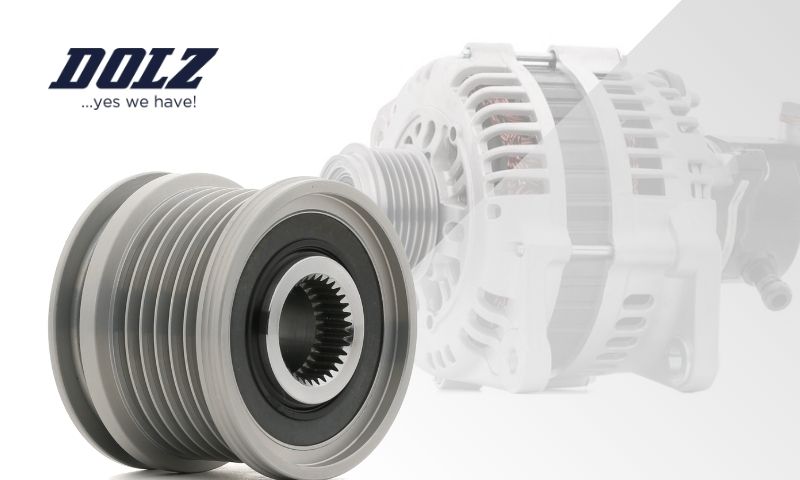An overrunning alternator pulley (OAP) can play an important part in the smooth running of the modern internal combustion (IC) engine. Today, more and more vehicle manufacturers design the belt drive systems with these pulleys because of the torsional vibrations produced in modern engines (specially on diesel applications).
Let’s dive into this crucial component in modern vehicles and get a comprehensive overview of what a car alternator is, exactly how an alternator pulley works and what are the main types.
What is a car alternator?
With the battery and the voltage regulator, the alternator is one of the three major components needed to generate power for the electrical components.
Its primary role is to convert mechanical energy from the engine into electrical energy. It is connected to the engine by a belt, so when the car is running the alternator generates, by using a rotating magnetic field, the electrical power to feed the system and charge the battery of the car.
Alternator has many different components, and each has their own dedicated function. Among the three major components are: the rotor, that the stator, and rectifier (several diodes). Besides these key components the automotive alternator also includes a voltage regulator and an alternator pulley.

How alternator pulley works
With the ever-increasing number of auxiliary systems that require more powerful alternators and, since the alternator contributes to the fuel consumption the increasing requirements on emissions have started an interest in developing alternator pulleys to deal with engine torsional fluctuations. An alternator pulley is a device that allows a vehicle’s alternator to be turned by a belt, which is driven off of the engine’s accessory drive system. That is, when the engine remains idle, it remains at enough speed to produce sufficient power for maintaining the battery’s charge.
Today, an increasing proportion of cars are equipped with Overrunning Alternator Pulleys (OAP).
Types of alternator pulleys
There are 3 major types of alternators pulley: solid pulley, OAP and OAD™.
- Solid Alternator Pulley: It used to be the automotive industry standard during many years, evolving from the V-belt type to the poly-V type. The only function of the Solid Pulley is to drive the alternator. And unlike the other pulleys, it does not incorporate a protective cap.
- OAP: The Overrunning Alternator Pulley, or “one-way clutch”, allows the alternator to wheel freely when the drive belt speed is suddenly decreased. That is, allows the rotor of the alternator to coast to a stop when the engine is shut down. This “overrunning” feature eliminates chirping sounds that happen during engine shutdown quickly causing the belt to slip at the alternator pulley.
- OAD™: The Litens OAD™ not only has a one-way clutch inside, it also incorporates a patented internal spring mechanism (a torsion spring) required to absorb energy. Its design is tuned (engine specific) to absorb base engine vibrations (cylinder firing pulses) before they reach the alternator rotor and therefore negatively affect the accessory drive.
Among its main benefits, there are: less tensioner motion, improves engine feel by reducing NVH and more robust accessory drive. In other words, the different parts of the system as the alternator, the water pump or other accessories bearings will last much longer.
With that being said, as these pulley types are not interchangeable, it is very important only to use the pulley type that the vehicle was originally equipped with. Always replace the OE pulley technology with the same Aftermarket technology.
DOLZ Leading range of OAPs and OAD’s™
We are continuously engaged in the development of innovative products to provide our global customer base with the necessary parts for timely and professional repairs.
With a broad portfolio of more than 270 references launched, Dolz’s range includes the two existing technologies on the market, OAP pulleys (Overrunning Alternator Pulley) and OAD™ pulleys (Overrunning Alternator Decoupler).

Product Range
Water pumps – Timing Drive Kits – Alternator Pulleys – Thermostats
Selecting the best supplier is a must. Do not hesitate to contact us if you have any questions or require more information about our product lines, commercial information, or technical product specifications (including replacement guidelines).

